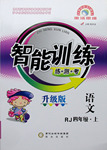题目内容
The old king decided to retire and ________ the heavy load of responsibility to his three daughters.
A.hear out B.take over C.hand over D.speak out
C

 智能训练练测考系列答案
智能训练练测考系列答案第四部分 任务型阅读 (共10小题;每小题1分, 满分10分)
请认真阅读下列短文, 并根据所读内容在文章后表格的空格处里填人最恰当的单词。注意:每个空格填1个单词。
There’re seven oceans across most of the earth's surface. But they contain saltwater, unfit for human consumption. Only a tiny part of the world's water – about 2.5 percent – is drinkable. That still would be an enough supply if it were clean and available where needed. However, it's not.
Today some 1.2 billion people lack access to safe drinking water and 2.6 billion lack proper waste water treatment. As a result, polluted water supplies are blamed for the worldwide deaths of 1.8 million children, according to the United Nation's Human Development Report for 2006.That means 4,900 children under 5 years old died per day.
What's more, children worldwide miss 443 million days of school each year because of water-related illnesses. The UN also estimates that half of the world's hospital beds are occupied by patients suffering from water-borne diseases.
Beyond that, millions of people (almost always women) in different parts of the world spend hours per day carrying water up to several miles for their family's needs because no source is close at hand.
Since 1992, the UN has sponsored(倡议) World Water Day, observed on March 22, to raise awareness of the need to protect and improve access to clean water supplies.
"When the well is dry, then we know the worth of water," said Benjamin Franklin, long before today's water challenges.
It's clear that competition for water "will intensify(加剧) in the decades ahead," said Kemal Dervis, administrator of the United Nations Development Program in its 2006 report. "Water is the fundamental resource, crossing borders through rivers, lakes – a fact that points to the potential for cross-border tensions in water-stressed regions."
Growing populations, are using up water resources, and climate change is expected to worsen the problem as it changes rainfall patterns. A new UN study shows that as temperatures have gone up, the world's glaciers(冰川) have been decreasing at fast rates and may disappear entirely within a few decades. China, India, and the West Coast of the United States are among populous places that rely on glaciers for their water supply. Glaciers feed some of the world's great rivers, which serve billions of people.
One of the UN's Millennium Development Goals, established in 2000, is to cut in half by the year 2015 the population unable to reach or afford safe drinking water. Achieving that goal is "critically important," says UN Secretary-General Ban Ki Moon. "When you look at the health and development challenges faced by the poorest of the world's population, the common sticking point often turns out to be water." Governments and private groups are working hard to solve the problem as well.
| Title | A Mighty Global Thirst |
| Facts | Drinkable water (1)_____up only 2.5 percent of the world’s water. Safe drinking water is not(2) ________to some 1.2 billion people. 2.6 billion people are (3)_______ of proper wastewater treatment. 1.8 million children died from polluted water supplies in 2006. Children worldwide are (4)________from school for 443 million days because of water-related illness. Water-borne diseases keep people in half of the world’s hospital beds. Millions of people spend hours per day carrying water a long distance to meet their family needs. |
| Purpose of the UN’s sponsoring World Water Day | To make people more (5)______ of the need to protect and improve access to clean water supplies. |
| (6)_______ of the global thirst | Water pollution Growing (7)__________ |
| Potential threat | Climate change, which may result in the (8)________ of glaciers in the near future. |
| Efforts | The UN aims to cut in half by the year 2015 the population having no (9)______ to safe drinking water. Governments and private groups are trying to work out a (10)______ to the problem. |
| 完形填空。 | ||||
| Having lived in the house for so long, we found our kitchen looked old. We decided it was time to 1 the kitchen, and my husband and I were discussing 2 colors. The children, sitting nearby, suddenly all spoke together: "Not the measuring stick." "No," I 3 them. "Not the measuring stick." The measuring stick isn't a (an) 4 stick but the kitchen side of the door between our kitchen and dining room. Along the edge we've 5 each child's growth by making a mark showing his or her 6 on every birthday. Over the years so many colored pens, pencils and markers have been used, that now, this white door is somewhat like an abstract painting. Names and dates show different 7 , and I can tell by the script (手迹) who measured whom. An eight-year-old measured her three-year-old sister, a grandchild measured her grandmother, and my husband measured me. At the parties, when this door 8 back and forth frequently, friends stop to 9 the names and dates. When we ask if they would like to be always remembered, they usually smile 10 and go back right up into place, 11 to be measured. Many of those listed on the door are still 12 ; some have stopped. Some remain with us only in 13 . When my mother came to see my eldest daughter graduate from university, we measured her too. It was her last visit to our home. We haven't 14 the new kitchen color plan yet, but one thing is certain: whatever color we choose, the back of the ki | ||||
|